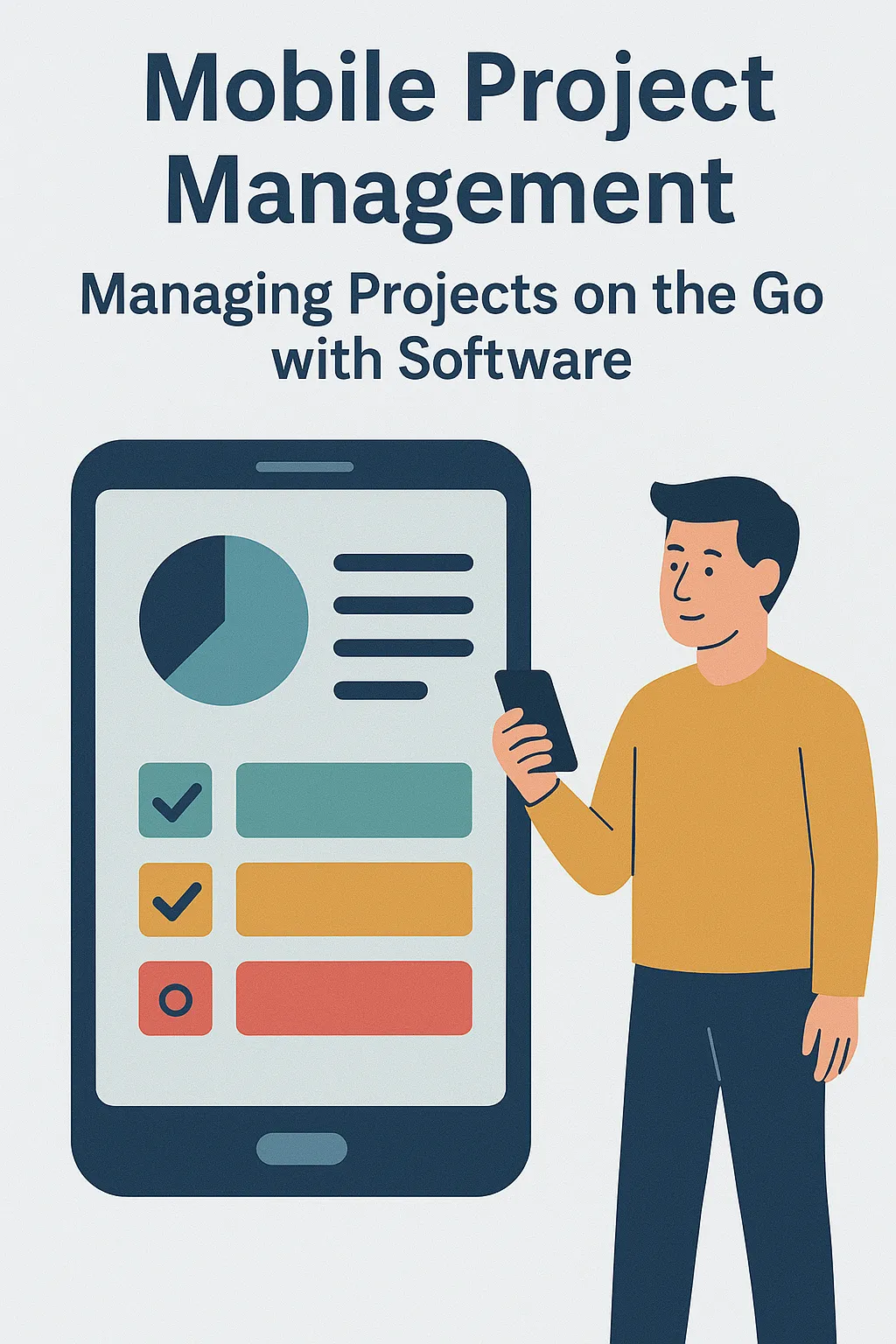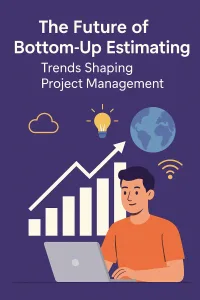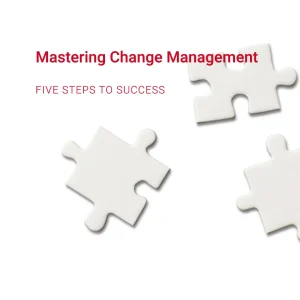Introduction to Mobile Project Management
The ability to manage projects on the go has become increasingly essential. Mobile project management refers to the use of project management software that is accessible via mobile devices, allowing project managers and team members to stay connected and productive regardless of their location. This shift towards mobile capabilities has transformed how projects are planned, executed, and monitored, making it easier for professionals to adapt to the demands of remote work and dynamic project environments.
Definition of Mobile Project Management
Mobile project management encompasses the tools and applications that enable project managers to oversee tasks, communicate with team members, and track progress directly from their smartphones or tablets. This approach allows for real-time updates and collaboration, ensuring that all stakeholders remain informed and engaged, even when they are not physically present in the office.
Overview of the Rise of Mobile Technology in Project Management
The rise of mobile technology in project management can be attributed to several factors:
- Increased Smartphone Usage: With the proliferation of smartphones and tablets, professionals are now equipped with powerful tools that can handle complex project management tasks. This accessibility has led to a growing demand for mobile-friendly project management solutions.
- Cloud Computing: The advent of cloud technology has facilitated the development of mobile project management software that syncs data across devices. This means that project managers can access the same information from their desktop and mobile devices, ensuring consistency and reliability.
- Remote Work Trends: The shift towards remote work, accelerated by global events, has necessitated the need for mobile project management tools. Teams are no longer confined to a single location, and mobile software allows for seamless collaboration across different time zones and geographical boundaries.
Importance of Mobility for Project Managers and Remote Workers
Mobility is crucial for project managers and remote workers for several reasons:
- Flexibility: Mobile project management software provides the flexibility to manage tasks and communicate with team members from anywhere. This is particularly beneficial for project managers who are frequently on the move or working from various locations.
- Real-Time Collaboration: With mobile access, team members can collaborate in real-time, share updates, and address issues as they arise. This immediacy helps to keep projects on track and fosters a more agile working environment.
- Enhanced Productivity: The ability to manage projects from mobile devices can lead to increased productivity. Project managers can quickly respond to messages, update project statuses, and make decisions without being tethered to their desks.
The Evolution of Project Management Software
As project managers increasingly find themselves working remotely or on the go, the need for adaptable and accessible project management software has never been more critical. Here’s a look at the evolution of project management software, highlighting its history, the shift to mobile applications, and examples of tools that have successfully embraced this change.
Brief History of Project Management Software
- Early Beginnings: Project management software emerged in the 1960s and 1970s, primarily designed for large-scale projects in industries like construction and engineering. Tools like Critical Path Method (CPM) and Program Evaluation Review Technique (PERT) were developed to help manage complex project schedules and resources.
- Desktop Dominance: The 1980s and 1990s saw the rise of desktop applications, with software like Microsoft Project becoming a staple for project managers. These tools provided robust features for planning, scheduling, and resource allocation, but they were limited to desktop environments, which restricted mobility and real-time collaboration.
Transition from Desktop to Mobile Applications
- Emergence of Mobile Technology: With the proliferation of smartphones and tablets in the early 2000s, the demand for mobile-friendly project management solutions began to grow. Project managers sought tools that would allow them to access project information, communicate with team members, and update tasks from anywhere.
- Cloud Computing: The rise of cloud technology played a pivotal role in this transition. Cloud-based project management software allowed for real-time updates and collaboration, making it easier for teams to work together regardless of their physical location. This shift enabled project managers to move away from traditional desktop applications and embrace mobile solutions.
- User-Centric Design: Modern project management software has increasingly focused on user experience, offering intuitive interfaces and mobile applications that cater to the needs of on-the-go professionals. Features such as push notifications, mobile task management, and integrated communication tools have become standard, allowing project managers to stay connected and informed.
Examples of Software that Have Successfully Made This Transition
- Trello: Known for its visual task management system, Trello has developed a robust mobile application that allows users to create, manage, and track projects seamlessly from their smartphones. Its card-based interface is particularly user-friendly, making it easy for teams to collaborate on the go.
- Asana: Asana has adapted its platform to include a powerful mobile app that enables project managers to assign tasks, set deadlines, and communicate with team members in real-time. The app’s design prioritizes ease of use, ensuring that users can manage their projects efficiently from anywhere.
- Monday.com: This platform has embraced mobile capabilities by offering a comprehensive app that mirrors its desktop functionality. Users can manage workflows, track progress, and collaborate with team members, all from their mobile devices, making it an ideal choice for remote workers.
- Basecamp: Basecamp has long been a favorite among project managers for its simplicity and effectiveness. Its mobile app allows users to manage projects, communicate with team members, and access important documents, ensuring that project managers can stay productive while on the move.
Key Features of Mobile Project Management Software
Project managers and remote workers increasingly rely on mobile project management software to stay connected and productive while on the go. The rise of mobile capabilities in these tools has transformed how teams collaborate and manage projects. Here are the essential features that make mobile project management software effective:
- Real-time Collaboration Tools: Effective communication is crucial for project success, especially when team members are dispersed across different locations. Mobile project management software often includes features such as instant messaging, file sharing, and discussion boards that allow team members to collaborate in real time. This ensures that everyone is on the same page, can provide immediate feedback, and can make decisions quickly, regardless of their physical location.
- Task Management Capabilities: Mobile project management tools typically offer robust task management features that allow users to create, assign, and track tasks directly from their mobile devices. This includes setting deadlines, prioritizing tasks, and monitoring progress. With these capabilities, project managers can ensure that team members are aware of their responsibilities and can adjust workloads as necessary, all from the convenience of their smartphones or tablets.
- Time Tracking and Reporting Features: Accurate time tracking is essential for project management, especially for billing and resource allocation. Many mobile project management applications come equipped with time tracking features that allow users to log hours worked on specific tasks directly from their devices. Additionally, these tools often provide reporting functionalities that enable project managers to generate insights into team performance, project timelines, and budget adherence, helping to inform future project planning.
- Integration with Other Mobile Applications and Tools: To enhance productivity, mobile project management software often integrates seamlessly with other applications and tools that teams may already be using. This includes calendar apps, email clients, and cloud storage services. Such integrations allow for a more streamlined workflow, enabling users to access all necessary tools from a single platform, reducing the need to switch between multiple applications and improving overall efficiency.
By leveraging these key features, mobile project management software empowers project managers and remote workers to manage their projects effectively, ensuring that they can stay productive and connected, no matter where they are.
Benefits of Using Mobile Project Management Software
Project managers and remote workers increasingly rely on mobile project management software to stay connected and efficient. The rise of mobile capabilities in these tools has transformed how projects are managed, offering numerous advantages that cater specifically to the needs of on-the-go professionals. Here are some key benefits of utilizing mobile project management software:
- Increased Accessibility and Flexibility: Mobile project management software allows users to access project information anytime and anywhere. This flexibility is crucial for project managers who are often on the move, enabling them to check project statuses, update tasks, and respond to team inquiries without being tied to a desk. With mobile access, project managers can make informed decisions quickly, regardless of their location.
- Improved Communication Among Team Members: Effective communication is vital for project success, and mobile project management tools facilitate real-time communication among team members. Features such as instant messaging, notifications, and collaborative platforms ensure that everyone stays informed about project developments. This immediacy helps to reduce misunderstandings and keeps the team aligned, fostering a more cohesive working environment.
- Enhanced Productivity and Time Management: Mobile project management software often includes features that help users prioritize tasks, set deadlines, and track progress. By having these tools readily available on their mobile devices, project managers can efficiently manage their time and focus on high-priority tasks. The ability to receive reminders and alerts on the go also helps prevent tasks from falling through the cracks, ultimately leading to improved productivity.
- Ability to Manage Projects from Anywhere: One of the most significant advantages of mobile project management software is the ability to manage projects from virtually any location. Whether in transit, at a client meeting, or working remotely, project managers can oversee project timelines, allocate resources, and adjust plans as needed. This capability not only enhances the manager’s ability to respond to challenges promptly but also empowers team members to contribute effectively, regardless of their physical location.
Challenges of Mobile Project Management
As mobile project management software becomes increasingly popular among on-the-go project managers and remote workers, it is essential to recognize the potential challenges that may arise. Here are some key obstacles that users might face when utilizing these tools:
- Connectivity Issues and Reliance on Internet Access: One of the most significant challenges of mobile project management is the dependency on a stable internet connection. Remote workers may find themselves in areas with poor connectivity, which can hinder their ability to access project updates, communicate with team members, or upload important documents. This reliance on internet access can lead to delays in project timelines and affect overall productivity.
- User Interface and Experience Challenges: Mobile project management software often has to condense complex functionalities into a smaller screen format, which can lead to usability issues. Users may struggle with navigating through features that are more intuitive on desktop versions. A cluttered or poorly designed interface can frustrate users, making it difficult to manage tasks efficiently. Ensuring that the software is user-friendly and optimized for mobile devices is crucial for enhancing the user experience.
- Data Security and Privacy Concerns: With the rise of mobile project management tools, data security becomes a paramount concern. Remote workers often access sensitive information on their mobile devices, which may not have the same level of security as a desktop environment. This raises the risk of data breaches, especially if users are connecting to public Wi-Fi networks. Organizations must prioritize the implementation of robust security measures, such as encryption and secure authentication, to protect sensitive project data.
- Managing Notifications and Distractions: Mobile devices are notorious for their potential to distract users with constant notifications from various apps. While notifications can be beneficial for keeping project managers informed about updates and deadlines, they can also lead to information overload. Remote workers may find it challenging to focus on their tasks amidst the barrage of alerts, which can negatively impact their productivity. It is essential for users to customize their notification settings to strike a balance between staying informed and minimizing distractions.
Best Practices for Using Mobile Project Management Software
As mobile capabilities in project management tools continue to evolve, project managers and remote workers can leverage these advancements to enhance productivity and collaboration. Here are some actionable tips for effectively utilizing mobile project management software:
1. Choosing the Right Software That Fits Your Team’s Needs
- Assess Features: Evaluate various mobile project management tools based on features that align with your team’s specific requirements. Look for functionalities such as task management, time tracking, file sharing, and real-time collaboration.
- User Experience: Opt for software that offers an intuitive interface and seamless navigation. A user-friendly design can significantly reduce the learning curve for team members, ensuring quicker adoption and effective use.
- Integration Capabilities: Ensure that the chosen software can integrate with other tools your team already uses, such as communication platforms (e.g., Slack, Microsoft Teams) and file storage services (e.g., Google Drive, Dropbox). This will streamline workflows and enhance overall efficiency.
2. Establishing Clear Communication Protocols
- Define Communication Channels: Clearly outline which channels will be used for different types of communication (e.g., urgent updates via instant messaging, detailed discussions via email). This helps prevent confusion and ensures that important information is not overlooked.
- Regular Check-Ins: Schedule regular virtual meetings or check-ins to discuss project progress, address challenges, and celebrate milestones. This fosters a sense of team cohesion, even when working remotely.
- Utilize Notifications Wisely: Encourage team members to customize their notification settings to avoid being overwhelmed by alerts. This ensures that they receive only the most relevant updates, allowing them to focus on their tasks.
3. Setting Boundaries for Mobile Work
- Establish Work Hours: Encourage team members to set specific work hours and communicate these to the team. This helps maintain a healthy work-life balance and prevents burnout, especially when working remotely.
- Designate a Workspace: Advise team members to create a dedicated workspace, even if they are working from home or on the go. A designated area can enhance focus and productivity, making it easier to separate work from personal life.
- Encourage Downtime: Remind team members to take regular breaks and disconnect from their devices after work hours. This practice is essential for maintaining mental well-being and sustaining long-term productivity.
4. Regularly Updating and Maintaining Project Data
- Real-Time Updates: Encourage team members to update project data in real-time as tasks are completed or changes occur. This ensures that everyone has access to the most current information, reducing the risk of miscommunication.
- Conduct Regular Reviews: Schedule periodic reviews of project data to assess progress and identify any potential issues. This proactive approach allows teams to address challenges before they escalate.
- Backup Data: Ensure that all project data is regularly backed up to prevent loss due to technical issues. Many mobile project management tools offer cloud storage options, making it easy to keep data secure and accessible.
By implementing these best practices, project managers and remote workers can effectively utilize mobile project management software to enhance collaboration, streamline workflows, and achieve project goals, all while managing their tasks on the go.
Future Trends in Mobile Project Management Software
Mobile project management software is becoming increasingly essential for on-the-go project managers and remote workers. Here are some key trends that are shaping the future of mobile project management tools:
- Emergence of AI and Machine Learning: Artificial intelligence (AI) and machine learning are set to revolutionize project management software by automating routine tasks, providing predictive analytics, and enhancing decision-making processes. These technologies can analyze vast amounts of data to identify patterns and trends, enabling project managers to make informed decisions quickly. For instance, AI can help in resource allocation by predicting project bottlenecks and suggesting optimal team configurations based on past performance data.
- Increased Focus on User Experience and Design: As mobile project management tools become more prevalent, there is a growing emphasis on user experience (UX) and design. Software developers are prioritizing intuitive interfaces that simplify navigation and enhance usability. This trend is crucial for mobile applications, where screen size and touch interactions can significantly impact user engagement. A well-designed app can improve productivity by allowing users to access essential features quickly and efficiently, even while on the move.
- Integration of Virtual and Augmented Reality: The integration of virtual reality (VR) and augmented reality (AR) into project management software is an exciting trend that can enhance collaboration and visualization. For example, AR can be used to overlay project data onto real-world environments, allowing team members to visualize project progress in a more interactive way. This technology can be particularly beneficial in industries such as construction and engineering, where visualizing complex projects can lead to better planning and execution.
- The Role of Remote Work in Shaping Future Software Features: The rise of remote work has significantly influenced the development of project management software features. Tools are increasingly being designed to facilitate collaboration among distributed teams, with features such as real-time communication, file sharing, and task management becoming standard. Future software will likely continue to enhance these capabilities, incorporating features that support asynchronous work and improve connectivity among team members, regardless of their location.
Conclusion
The ability to manage projects on the go has become increasingly vital for project managers and remote workers. Mobile project management software offers a range of benefits that can significantly enhance productivity and streamline workflows. Here’s a recap of the key points discussed:
- Benefits of Mobile Project Management: Mobile project management tools provide flexibility, allowing project managers to access critical information and collaborate with team members from anywhere. This capability ensures that tasks can be updated in real-time, deadlines can be met more efficiently, and communication remains seamless, regardless of location. The convenience of mobile access also empowers teams to respond quickly to changes and challenges, fostering a more agile project management approach.
- Challenges to Consider: While mobile project management tools offer numerous advantages, they also come with challenges. These may include issues related to connectivity, the learning curve associated with new software, and potential security concerns regarding sensitive project data. It is essential for project managers to weigh these challenges against the benefits to determine the best approach for their teams.
- Encouragement to Adopt Mobile Tools: Embracing mobile project management software can lead to enhanced productivity and improved project outcomes. By leveraging these tools, project managers can ensure that they and their teams remain connected and informed, ultimately driving project success. The ability to manage tasks, communicate with team members, and track progress from a mobile device can transform how projects are executed.
In conclusion, the rise of mobile capabilities in project management tools is not just a trend; it is a necessary evolution that empowers project managers and remote workers to thrive in a dynamic work environment. Embrace the change and explore the possibilities that mobile project management software can offer.
Find out more about Shaun Stoltz https://www.shaunstoltz.com/about/.
This post was written by an AI and reviewed/edited by a human.



